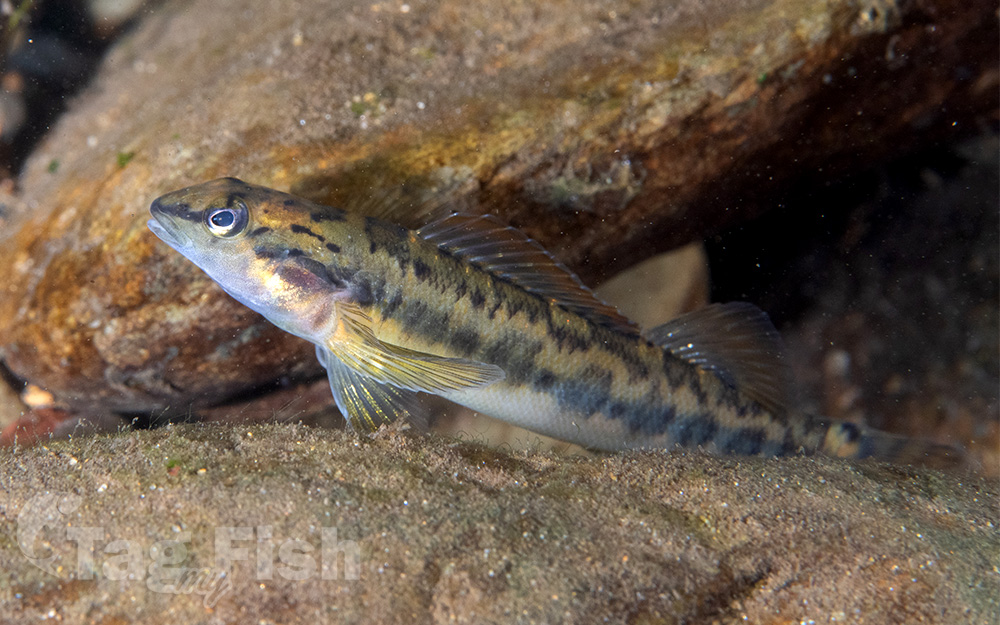Bronze darter
(Percina palmaris)

Classification
General data
The bronze darter (Percina palmaris) is a species of freshwater ray-finned fish, a darter from the subfamily Etheostomatinae, part of the family Percidae, which also contains the perches, ruffes and pikeperches.
It is restricted to the Coosa and Tallapoosa River systems in Georgia, Alabama, and southeastern Tennessee in the United States. It feeds on insect larvae and other small invertebrates, and spawns in April and May. It is a common fish within its range and the International Union for Conservation of Nature has classified its conservation status as being of least concern. However, it is susceptible to environmental disturbance and an ongoing management plan has been put in place to protect its habitat.
Description
The bronze darter is a relatively small fish reaching lengths up to 3.9 inches; pigmentation from the cells allows a distinctive bronze coloration to radiate from the fish body. The bronze pigmentation is expressed more vividly in males during breeding season.
Distribution
The geographic range of the bronze darter is restricted to the Mobile Bay drainage. Populations of bronze darters are located only in Coosa and Tallapoosa River systems in Georgia, Alabama, and southeastern Tennessee, United States of America. These locations make up Mobile Bay. Geographical range restrictions of the bronze darter potentially impair the ability of the species to recover from anthropogenic or naturally threatening phenomenon. Currently, there are no reports of the bronze darter being found outside the aforementioned locations. The bronze darter still occupies native range; however, potential issues can arise from dams in the Mobile Bay. Dams can affect the bronze darter population due to manipulation of water flow. Today, the species is categorized as stable due to the fact that populations are abundant and have been historically. Possible population stressors from urbanization could cause extirpation from the native range, and possible extinction would occur in the species.











